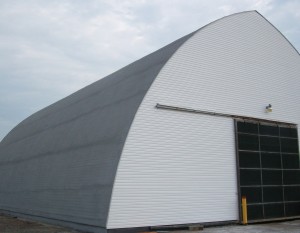Q: How long has Spray Foam Roofing been used?
A: Spray polyurethane foam was first introduced in the US in the 1960s for industrial insulation projects. SPF commercial roofing systems developed from external applications in the late 60s.
Q: How long can I expect my SPF roof to last?
A: Spray Foam Roofing systems have been used for more than 40 years with many of these original systems still in use. But, how long the system lasts depends on the quality of the original application and upkeep of long term maintenance. Progressive Materials, LLC offers the best commercial roofing products and certified installers.
In addition, the Progressive Materials SPF system withstands the most extreme weather conditions and has a greater resistance to wind uplift and hail damage.
Q: How do you maintain a SPF roof system?
A: You should inspect your roof semi-annually and after weather that might cause physical damage. Small damage can be repaired with a sealant and coating. More extensive damage can be repaired by reapplying SPF.
Depending on the original application and level of damage, SPF commercial roof systems are usually re-coated every 10 – 15 years.
Q: Where can I use a SPF roofing system?
A: Spray Foam Roofing is known for its excellent adhesion to a range of roofing substrates. BUR, clay and concrete, shingles, metal, and wood can be covered with a SPF system. SPF is light-weight and can be applied in varying thickness to add slope and fill in low areas. SPF commercial roofing systems are often used over existing roof coverings.
Spray Foam Roofing systems are ideal to use where:
- The roof has multiple penetrations.
- The roof has an unusual shape or contours.
- Additional insulation is required.
- The roof is located in a harsh weather environment.
- Lightweight materials are essential.
- Slope must be added for drainage.
- The existing commercial roof covering must be retained.
Q: Are there limitations of when to install a SPF roofing system?
A: Out of all the roofing systems on the market, SPF roofing has the most flexibility for timing of installations. You can install a Spray Foam system between early spring and late fall. But, the SPF and silicone protective coating should not be installed when there is ice, frost, or surface moisture.
Q: Why do you need a coating to cover SPF?
A: SPF is water resistant. But, the surface of Spray Foam can deteriorate under the sun’s ultraviolet rays. Progressive Materials, LLC has formulated a silicone coating which protects SPF against the suns damaging rays.
Q: Is a Spray Foam Roofing system a green alternative?
A: Yes, it is one of the greenest roofing systems available.
- Minimal landfill waste
- Superior Eco-Efficiency Analysis results
- Reduced “heat island” effect
- Decreased load on HVAC systems
- Reduced energy costs by reflecting sunlight and radiant heat
- International Code Council (ICC), LEED, and Energy Star Compliant
- UL and FM Approved
Q: How does the cost of Spray Foam Roofing system compare to other roof systems?
A: SPF roofing systems are very cost competitive. In fact, the Life Cycle Cost Analysis performed by Michelsen Technologies confirmed that over a 30 year life span, SPF roof systems cost between 10% and 50% less on average than comparable roof systems. (Averages were based on SPF roof system recoats of every 6, 10 and 15 years. A copy of the Life Cycle report is available from SPFA.)
Q: How do I select a contractor?
A: There is no need for you to shop for a commercial contractor. Progressive Materials, LLC partners with the best contractors in the business. We have done the leg work for you. Our contractors are certified to apply SPF and RCR roofing systems. Our quality control process includes inspections at all points of the process. After the final inspection a warranty is offered.
Q: What is the warranty period?
A: Progressive Materials, LLC offers a full system warranty up to 20 years.